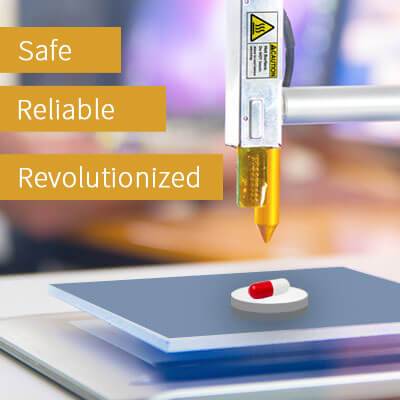What is 3D PRINTING?
What if you woke up one day to find a building right by your house that wasn’t there just last night? You probably won’t believe it, except you would if you knew about 3D Printing.While most people see 3D printing as something too complex, and are not ready to adopt this technology, UAE is already thinking ahead of the curve by using 3D Printing in its full potential. And from what we know about Dubai, building these colossal skyscrapers is like a regular cakewalk for the city. In 2015, while the world was still getting familiar with the term, Dubai unveiled the world’s first 3D-printed office ‘Dubai’s Museum of the Future’. Another big news from Dubai is that the government has launched ‘Dubai 3D Printing Strategy’, which aims to make Dubai ‘World’s 3D Printing Hub in Construction’.
We guess, by now, you are already hooked on to 3D Printing, in case you did not hear much about it. Now let us take a closer look at this technological breakthrough:
Understanding 3D Printing
3D Printing or Additive Manufacturing is a new way of building structures with the help of robotics and construction software like CAD and 3D Imagery. The robot uses construction blueprints to shape up the material as per the design prepared by the software. One of the biggest advantages of 3D Printing is that the printing robots fabricate the building’s components in the place of its origin itself, which reduces labour, time and transportation costs.
Types of 3D Printing Techniques
There are three types of 3D Printers based on their working. We have Extrusion-based 3D Printing in which a semi-liquid material is dispensed through the nozzle. The extruded material settles and hardens with time. Then there is Photo Polymer Printing, which uses a light-sensitive polymer that is used to join the components of the building. In Selective Deposition, layers of different materials are joined to form objects that are highly endurant. And then in Binding, layers of certain objects are created by fusing finely granulated material with the help of adhesive or laser.
Applications of 3D Printing
Not only has 3D Printing been used for shaping superstructures, it has ushered us into a new world of discoveries in manufacturing and construction sectors. With a wide portfolio of applications, 3D Printing empowers:
Research and Development
3D Printing Robots can create structures, materials and almost everything that can be modelled. They eliminate our participation in many complex processes with the help of Artificial Intelligence, thereby allowing us to explore and discover new aspects of science. Currently, scientists have started using 3D Printing to develop complex compounds and execute tasks that would otherwise take more effort and time, and would involve risk factor as well.
Edibles
We could barely believe when we came to know that food can now be printed. In food printing, deposition printing technique is used to squeeze out raw materials, which are then bound together with binding printers.
The latest advancement or say invention in the field of food printing is ‘Foodini’ – a food printer that allows you to print food by yourself. Just select your dinner, seasoning, topping, hit the print button and see the magic happen right before your eyes. The printer uses deposition technique of printing where it uses food ingredients as the extrusion material and creates delicacies just like a hotshot restaurant would.
Medicine
Some of the most positive uses of 3D Printing can be seen in the field of medicine, where manufacturers can create a desired medicine in no time. As you enter the composition you would like to create, the robot analyses the information fed and creates 100% safe medicines, which can be produced in bulk as well..
Construction
Building something from scratch could be a difficult task for us, but not for a robot. As discussed above, UAE has successfully identified the ability of 3D-Printing Robots to do wonders. Role of Artificial Intelligence in construction is quite significant as it aims to eliminate risks that it came across earlier; meaning that the robot grows every time it creates something new. Since the country exhibited its technological expertise by building world’s first 3D-Printed building, the scope of 3D Printing has not stopped at that. Today, Dubai has most number of buildings and skyscrapers that are a result of this incredible technology.

Conclusion:
The world has just started to adopt 3D Printing technology. However, the potential in it has always been apparent and open to positive modifications. There is a lot that can be achieved with 3D Printing in coming years. But then all the hue and cry about automated printing, snatching jobs away from regular construction workers is also a real situation. ‘Are we going to leave it at that or going to use 3D Printing in the best of everyone’s interest’ is a question we are going to have to deal with in future.

